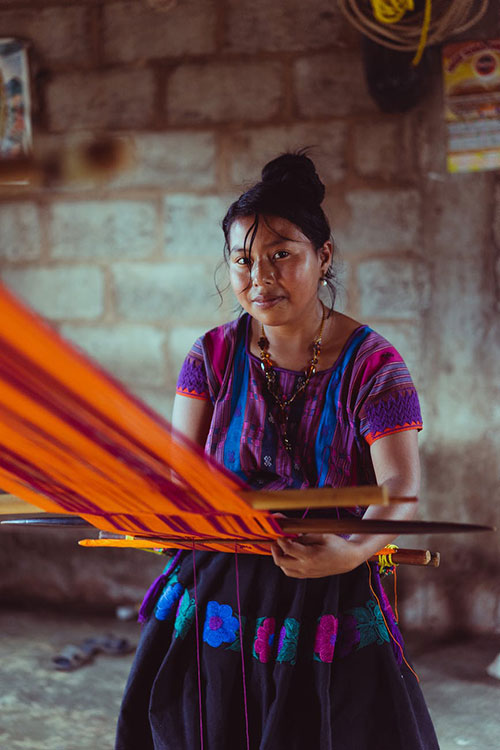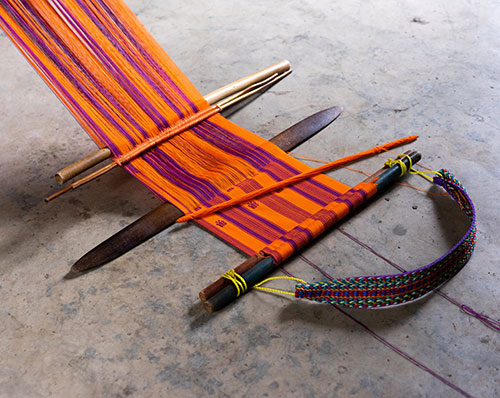 In Latin America, particularly in Guatemala, the traditional craft of weaving is rather highly developed. And one of the most beautiful, ornate, and symbolic hand-woven garments is the huipil, a traditional blouse or tunic adorned with local patterns. These textiles are a great part of Guatemalan folk culture and the diversity of their designs will amaze you. Especially when you realize that most of the patterns originate from the Aztec and Mayan civilizations.
In Latin America, particularly in Guatemala, the traditional craft of weaving is rather highly developed. And one of the most beautiful, ornate, and symbolic hand-woven garments is the huipil, a traditional blouse or tunic adorned with local patterns. These textiles are a great part of Guatemalan folk culture and the diversity of their designs will amaze you. Especially when you realize that most of the patterns originate from the Aztec and Mayan civilizations.
A huipil is a women’s loose-fitting tunic or blouse (the length can vary from waist-length to floor-length) made from 2 or 3 rectangular pieces (in rare cases, up to 5 pieces) of cloth stitched together. It’s interesting that, originally, a huipil was always wider than longer but, today, they are becoming narrower to fit the body better and for the sake of economy.
A huipil has openings for the head and arms – the cut of this garment is extremely simple, it’s the artful embellishments that create the beauty of a huipil. Huipiles are usually ornate, decorated with floral or geometrical woven designs, especially ceremonial and festive blouses. And huipiles are practically always hand-woven from cotton or woolen yarn using a traditional backstrap loom, very popular in Guatemala.

Guatemalan lady in traditional attire, including a huipil, in the process of weaving on a backstrap loom
Most huipiles are worn loose over a skirt or slip, although in some areas, women wear a belt over a huipil or tuck it into a skirt.
Each traditional huipil is created according to the customs and beliefs of a certain region and adorned with local woven patterns. You can look at a huipil and tell where in Guatemala it’s from. And this tradition continues for centuries, since the times of the Aztec and Mayan civilizations. So, the interwoven designs of huipiles are often very old, derived from these indigenous cultures.
Also, the cut and design of a huipil are so simple because of the origin of this centuries-old folk garment. No matter if a huipil is created for a festive occasion or everyday wear, the cut remains the same, but the decorations differ. By the way, woven patterns are not the only decoration that can be used on festive and ceremonial blouses – there are also ribbons, feathers, fringe, embroidery, etc.
A great thing about this traditional Guatemalan upper garment is that it is practically always hand-woven by the local women. They use traditional backstrap looms to create pieces of woven fabric that are then sewn together to form a blouse. Of course, these days, some Guatemalan females started using industrially-made fabric (often, synthetic even) instead of labor-intensive handmade fabric, but a true huipil should be hand-woven only. And the best and most ornate blouses are created in Guatemala by a handful of artisans who were taught the craft when they were little girls and have been refining their skills for decades.

Guatemalan traditional backstrap loom
It’s an honor for a Guatemalan woman to own and wear a huipil typical for her native region. Sadly, some ladies are forced by poverty to sell their traditional blouses – we wrote about this disastrous new reality here: The craft of weaving huipiles – female tunics of Guatemala – might vanish because of a huge market of underpriced secondhand huipiles. But hopefully, Guatemala will preserve the art of creating traditional huipiles and develop this craft even in the modern globalized world.


